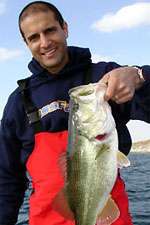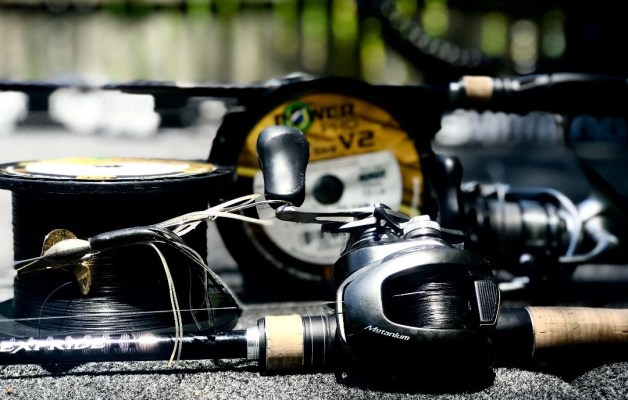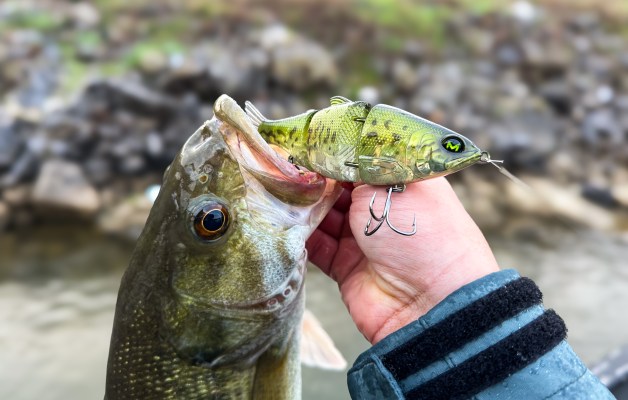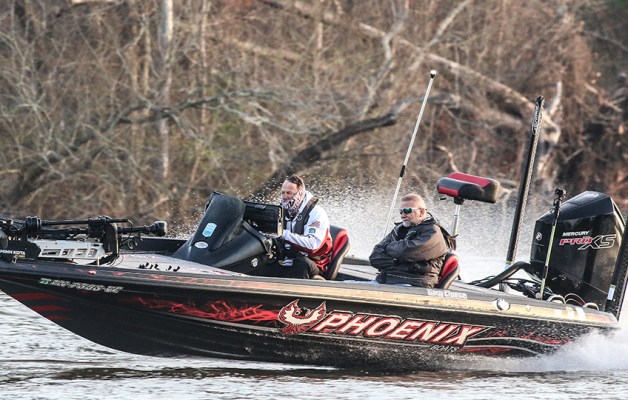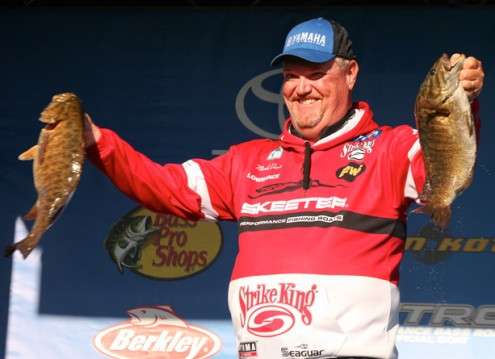
Mark Davis, who finished third at Bays de Noc, has been around long enough to know that big water can get nasty in a hurry, so he practiced with the wind in mind. “I decided I wasn’t going to run to Big Bay,” he said. “It was just too risky.
“My strategy was that if we had a marginal, windy day, I’d be able to get to my fish and fish them. But then they canceled all those days so that strategy didn’t matter.” Still, his decision was beneficial because the top four anglers all fished Little Bay.
“The fishing wasn’t any better over [in Big Bay], in my opinion, than was in Little Bay,” he noted. You could catch big fish in Little Bay – not the numbers of them you could in Big Bay, but I felt like there were plenty.”
His pattern was simple. “I was fishing grass lines,” he said. “Some of them were humps, but they were mostly grass lines.
“All the fish were 4 to 8 feet. The key to it was finding the rock mixed in. There was lots of sand, but if you could find some rock, that and grass were key. Any subtle structure – any kind of hump, a corner, an underwater point, a drop – with some rock on it and grass around it, that was the deal.”
The first day of the tournament didn’t go according to plan. “I caught three 4.5-pounders pretty early, had one 3 and one keeper,” Davis said. “Those were the only five bass I had. I felt like I wasn’t going to catch a decent limit there, so I left and ran out in the big water to make sure I had a decent string.”
That move worked: He upgraded with a couple of 3-plus fish and weighed 20-04. Very respectable.
The last day was different. At his first spot, he caught 40 fish “and they were all 4 pounds or bigger. It was the exact same water, exact same spot, exact same lure,” he said. “I don’t know what happened in those three days in between, but it certainly got a lot better.” His limit was 4 pounds better: 24-09.
How and what he fished
Before the drop shot rig got big in bass fishing, Great Lakes bass fishing was all about dragging tubes and that’s what Davis did. He kept it simple, using just one bait – a 3.5-inch Strike King Coffee Tube (green pumpkin) rigged two ways.
“On one rod the tube was Texas-rigged with a 1/4-ounce Strike King Tour Grade Tungsten weight and 3/0 EWG Gamakatsu hook,” he said. Another rod had a tube with a standard tube jig inserted inside – in this case a Strike King 3/8-ounce Tour Grade Tube Jighead.
 “In thicker grass and shallower water, I’d pick up the Texas rig,” he said. “In a little deeper water which often wouldn’t have quite so much grass, I’d pick up the tube jig.”
“In thicker grass and shallower water, I’d pick up the Texas rig,” he said. “In a little deeper water which often wouldn’t have quite so much grass, I’d pick up the tube jig.”
In an unusual move, he fished the tube on 17-pound line (Seaguar InvizX) and baitcasting gear: a new Lew’s Custom 7-foot medium-heavy rod and Team Lew’s Lite Speed reel.
“The water had a lot of color, so you could get away with heavier line,” he explained. He noted that “it was a lot easier to land the fish” with that line, and he had “no trouble” feeling bites even in the windy weather.
He kept his boat in deeper water, cast up shallow and used two retrieves. “Usually I was just dragging it on the bottom,” he said, especially when fishing bare rock. Sometimes in the grass “I’d snatch or rip it out of the grass – I’d get a lot bites doing that and letting the tube fall back down in it.”

